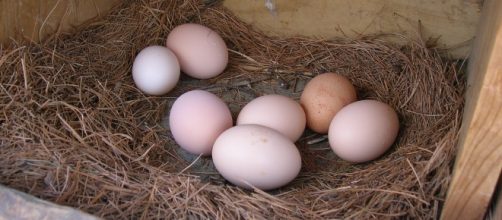All birds lay Eggs but the shape of all eggs are not same. Have you ever wondered why certain birds have eggs that are pointy/elongated on both ends while others produce eggs that are elongated on one side but rounded on the other? Scientists have been pondering this question for a very long time. Now, researchers have come up with a theory to explain what dictates the shape of a bird’s eggs.
Birds egg shape study
The research led by an evolutionary biologist from Princeton University, Mary Stoddard, has found evidence suggesting that bird Egg Shape differs due to the different frequency and length of flight of each species.
However, to start off the research Stoddard and her team of scientists collected images of birds’ eggs from the Museum of Vertebrate Zoology at University of California, Berkeley. These images were then scanned using specialized software to determine each eggs size and shape. The scans included eggs from about 1,400 different species of birds.
The scientists then created a graph of each egg’s elliptical (elongated on both ends) nature and their asymmetrical (one end pointy and the other round) feature. Researchers then correlated the graph against characteristics of each bird species, such as body weight, wing shape, and nest type. They discovered that the bird’s oviduct played an important part in dictating the size and shape of an egg, which is quite natural since compression is needed for the egg’s passage through the duct.
The second aspect which played an important part in the egg shape and size was something which was totally unexpected and it surprised the research team. The scientists found that the bird’s hand wing index also determined the characteristics and the shape of the eggs. This basically means that birds that fly longer are likely to have longer and more pointed eggs, while birds that do not take flight as frequently will likely produce asymmetrical eggs.
More studies needed to confirm assertions
However, even after such a large scale research and study, scientists indicated that there was not enough evidence to conclude that the results were accurate. They said that the hand wing index length and egg size may have developed independently from each other. Thus, Stoddard and her team suggests that further studies are needed to before the egg shape and size can be conclusively linked to the flight frequency of the birds.


